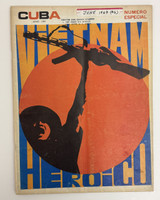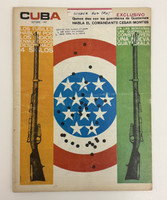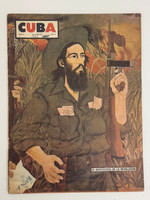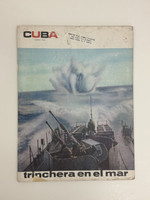- Travel
-
Exhibits
- Covers
- Immortal Cuba: Artists Take on Their Heroes
- Seattle Poster Exhibit
- Sandra Dooley & Alejandrina Cué
- The Art of Wayacón
- Cuban Folk Art
- Cuba In Black And White
- 25 Years of Cuban Art Space
- Summer Folk Art Expo
- ¡SPRING AWAKENING FROM CUBA!
- Celebrating The Art Of Cuban Women
- Celebrating Paper, Affordable Art from Cuba
- Art of the Revolution
- Outsider Art
- Lost and Found
- En la lucha: Celebrating Cuban Women and Their Art
- Cuban Art Stash
- 100 Fires: 5 Cienfuegos Artists' Work on Paper
- Waya + Monte! Magic Realism in Cienfuegos
- Viva Cuba Viva! Poster Show
- Cultivando Sueños
- Black Lives Matter in Cuba Jan 9-March 27
- Leandro Soto: Crónicas visuales
- Cuban Canvas
-
Archive
- Global Reflection 2018: Spirit and Community
- Exhibit in the cloud: Contemporary Works on Paper
- MADE IN CUBA! MINNEAPOLIS EXHIBIT
- Cuban Posters and Photography from CCS collection
- AUTUMN SALE! Sept/Oct 2017
- SPRING ARTS AND CRAFT SALE
- Vuelo Directo/Non Stop: Alberto & Alejandro Lescay
- The Many Faces of Fidel
- Somos
- Made in Cuba!
- The US empire in Cuban graphics
- Made in Cuba/Seattle exhibit
- Entre Nos
- Looking Back
- Cuban Art Space
- Membership/Donate
- About Us
- Cuba News
-
This December 1967 issue of Cuba magazine marks a pivotal moment in revolutionary history, published just two months after Che Guevara's execution in Bolivia on October 9, 1967. The cover transforms grief into defiant celebration, proclaiming "INVASIÓN CHE GUEVARA" in bold red typography with a black directional arrow, accompanied by Che's now-iconic portrait in the upper right corner. Rather than military invasion, this "invasion" refers to agricultural transformation—"Avanza Sobre Camagüey" (Advances on Camagüey)—depicting massive agricultural machinery silhouetted in black against vibrant green fields.
The striking graphic design merges revolutionary martyrdom with productive labor, a quintessential Cuban revolutionary synthesis. Agricultural harvesting equipment dominates the lower half of the cover, symbolizing how Che's spirit would live on through Cuba's economic development and the transformation of Camagüey province into productive farmland. This visual strategy reframes loss as mobilization, channeling collective mourning into agricultural and economic campaigns that would honor Che's memory through material achievement rather than mere commemoration.
The dynamic typography employs multiple colors and scales: red for "INVASIÓN" and major headlines, black for "CHE GUEVARA," blue for subheads about border guards ("GUARDAFRONTERAS VIGILAN COREA"), and content about cinema interviews, miniskirt surveys, and the "Film of the Year." The magazine announces a forthcoming Congress in January and features content on Mayombe religious practices, interviews with filmmakers Morgan and Gino Pontecorvo (director of The Battle of Algiers), and a face-to-face encounter with Francesco Rosi and Miguelina Cobian.
The interior spreads display sophisticated graphic design, including abstract geometric compositions with African-influenced religious imagery (likely related to the Mayombe article) and bold typographic layouts organizing the table of contents. The magazine addresses Vietnam, border defense, agricultural production, cinema, and various revolutionary topics, demonstrating how Cuban media integrated international solidarity, cultural production, and economic development into a unified revolutionary narrative. Published at the Center for Cuban Studies address in New York, this issue circulated among solidarity networks processing Che's martyrdom while witnessing Cuba's determination to continue his revolutionary legacy.
-







